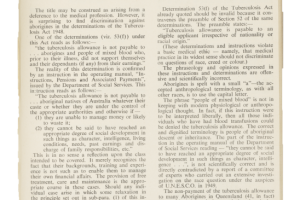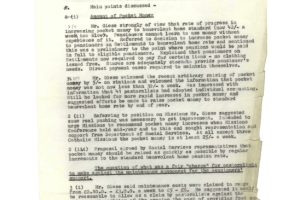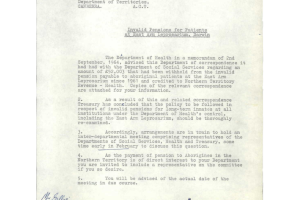
Artefacts about 1960s
When 23 Aboriginal people stopped getting Unemployment Benefit because they had not taken enough steps to find a job, supporters argued that no jobs were open to them.
After discovering that the departments of Health and Social Services were discriminatory in how they delivered Tuberculosis Allowance, activists successfully campaigned to change government instructions.
As well as working with communities on government-run reserves in the Northern Territory, Vai Stanton Mimbinggal worked with the government to improve conditions for Aboriginal people nationally.
Even though social security was a federal responsibility, the Western Australian Department of Native Welfare issued a booklet for Aboriginal people instructing them to access payments through state-based officers.
During the 1960s, there was increasing pressure for Aboriginal pastoral workers to get equal wages. The government was reluctant to grant Unemployment Benefit payments to Aboriginal workers who were likely to be affected by changes to wages.
In 1965, Aboriginal workers paid at below-award rates could not get government payments. The Federal Council for the Advancement of Aborigines and Torres Strait Islanders raised the issue with government, labelling it ‘coercion’ and ‘discrimination’.
Aboriginal people living on stations and missions only received part of their government payment to manage themselves. In 1965, officials met to discuss how much this should be and how to standardise the amount people got.
Aboriginal leprosy patients in the Northern Territory received only a fraction of their pension payments in the 1960s, while other patients got their benefits in full. Government officials disagreed about how to spend the withheld payments and the money went unaccounted for.







